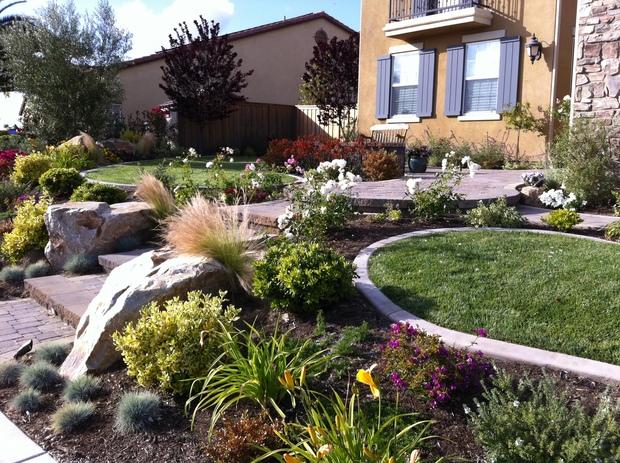Landscapers Things To Know Before You Get This
Landscapers Things To Know Before You Get This
Blog Article
Not known Facts About Landscapers
Table of ContentsGetting The Landscapers To WorkThe Facts About Landscapers RevealedIndicators on Landscapers You Need To KnowNot known Details About Landscapers Landscapers Fundamentals Explained
- A tree or bush (hedge) that loses its fallen leaves in winter months. In the PNW there are semi-deciduous or semi-evergreen plants that might lose their leaves relying on how cool the wintertime is. Abelia and some hebe are examples. Landscapers. - A level gathering room, made of timber or composite material (made to appear like timber), generally adjacent or affixed to a structure.

This is an all-natural process, and the result can be utilized for paths and outdoor patios. - Key landscape attributes being suggested in a landscape design strategy.
How Landscapers can Save You Time, Stress, and Money.
These goals assist the layout procedure, not the designer's style or preferences. Typical layout purposes in Portland are low maintenance, drought forgiving, and pet friendly.
Over time this layer can obtain really thick and make it hard for water, sunlight, and nutrients to obtain to sections of the lawn.- The process of collecting and controlling the flow of water on a residential or commercial property. This can be performed with grading, French drains pipes, completely dry wells, absorptive surface areas, sump pump, rainfall gardens, and a lot more.
- A slow feeding irrigation system that makes use of adaptable tubes and emitters to send a precise quantity of water to each plant. - The capacity of a plant to endure without much summer season water.
- A garden feature where water is stood for by an aggregate rock product, generally a crushed rock or granite.- A stone or natural flagstone outdoor patio, course, or pathway built without a concrete base.
8 Easy Facts About Landscapers Explained
- A stone keeping or totally free standing wall developed without the use of mortar. - An underground structure that collect water and allows it to reduce percolate right into the dirt around it.
Landscape design that is compatible with a sites' setting in both look and sustainability without unfavorable impacts to the setting. Bordering in the landscape is a line of demarcation that develops aesthetic interest in the yard by dividing one segment from another section.
Areas can also sense of "room" provided by trees, various other plantings, fencings, or screens. The landscape near the access to a structure. A tree, shrub or creeping plant, trained to expand on a wall or fencing into a specific pattern. Specifically beneficial for fruit trees, making more it easy to collect the fruit and including mess.
A plant that is not native to the area where it will be grown. Not all "exotics" are invasive or hazardous, and several can be well behaved or dry spell tolerant (Landscapers). A mass planting of brushes. Thicker bladed lawn yard that spread using rhizomes.: The degree of dirt on your residential property before bark dust or garden compost is spread out.
Our Landscapers Diaries

The purpose, reason, or activity that a location is be landscaped for. Stairways work, for instance, to allow foot website traffic backwards and forwards an incline. Area for growing plants for viewing, consuming, or physical task. A roofed building used over an exterior celebration area. The sprouting of a seed, perhaps describing a yard that is being grown from seed.
Rock item, either rounded or fractured, that is relatively tiny- usually 1" or less. Reduced plants that are allowed or motivated to spread over an area. Can describe any "hard" garden components consisting of statuary or stones but most generally is utilized site here to refer to courses, patios, and walls.: Elevation difference in between the level of water in a fish pond (or the level of the pump if it rests outside the pond) and the top outlet of water which influences performance of the water pump in gph (gallons per hour). Thick shrubs or trees that form a fencing, screen, or border.

Indicators on Landscapers You Should Know
Traditional PNW landscapes are casual. A plant that spreads out more than wanted, or right into habitats where it does damages.
Can consist of head positionings and insurance coverage, pipe sizing, GPM specifications, and materials needed to install this system. Certified specialist who designs landscapes, educated in engineering and style as well as in gardening.
Landscape developers generally have less education than Landscape Architects and are not accredited. A completed landscape style, outlining all components for the new landscape.
A water tight HDPE material utilized below fish ponds, streams and waterfalls in water attributes. Using many plantings of the same range to discover this fill up in a location in the landscape.
Report this page